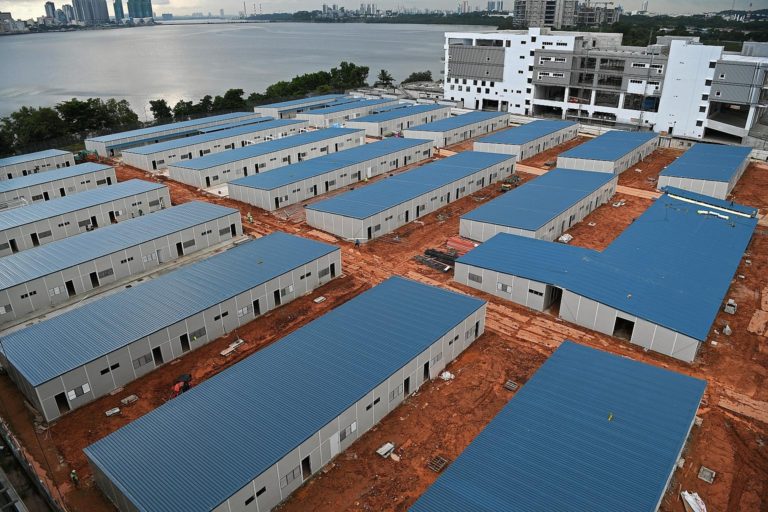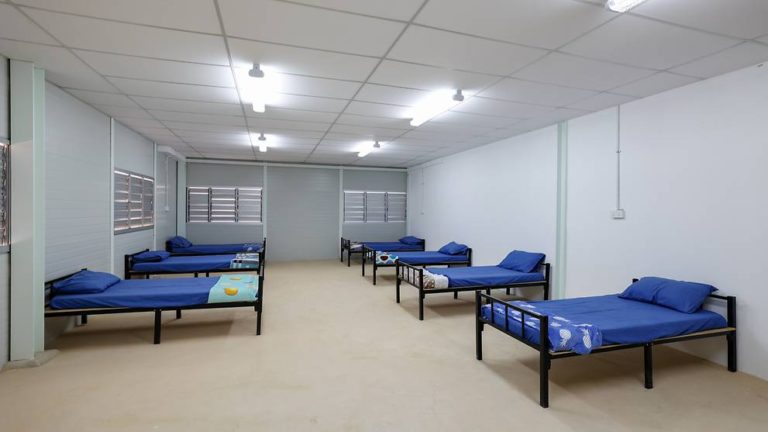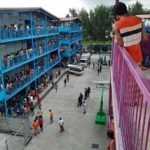Singapore aims to build new dormitories with improved living standard

As part of longer-term plans, Singapore is planning to build new purpose-built dormitories over the next few years to house up to 100,000 workers. These dormitories, which will have amenities such as minimarts and barber services, will replace the temporary accommodations built this year. About 11 purpose-built dormitories will be ready in the next two years. Workers living in these dormitories will also have access to medical care and support.
Improved Living Standard Dormitories
A set of standards and specifications will be developed for the new dormitories, which will look into the design, facilities, management and regulation of these dormitories, and will factor in social interaction and disease response needs.
These efforts aim to make dormitory living and design more resilient to public health risks, including pandemics. Lessons learnt from the current COVID pandemic will be taken in, with feedback sought from relevant stakeholders.
These improved standards will be piloted in the upcoming quick build dormitories (QBDs):
- Living space per resident: at least 6 sqm (not including shared facilities), from at least 4.5 sqm per resident (including shared facilities) currently.
- Maximum of 10 beds per room, where only single deck beds will be used with 1m spacing between the beds. Currently, there are no limits on the occupancy per room. In practice, dormitories typically have 12-16 beds per room, with mostly double decker beds.
- One toilet, bathroom and sink to every 5 beds, an improvement from every 15 beds currently.
- More sick bay beds – at least 15 per 1,000 bed spaces. An improvement from the current requirement of just one sick bay bed per 1,000 bed spaces.
The Government is also studying the possibility of developing the purpose-built dormitories on a different model compared to the present system, where currently land is released for commercial operators to bid, build, or operate.
Quick Build Dormitories for Short Term Solution

New Quick Build Dormitories (QBDs), which are temporary structures that can be constructed quite quickly with a low density. These dormitories will last for around two or three years, and can house about 25,000 people in total.
The new standards being piloted at QBDs include having no more than 10 beds per room, with at least 1m spacing between them. Previously, there was no limit to the number of beds per room and it was common to find 12 to 16 people sharing one room. The new standards also include having fewer residents share common facilities such as toilets, bathrooms and sick bays.
QBDs are part of efforts by the Government to improve living standards in migrant worker housing. The newly built dormitories will pilot some new standards to make dormitory living more resilient to public health risks like COVID-19.
Foreign Worker Safely Resume Work
The demands for migrant construction workers may not see a diminishing trend as they play a crucial role and make significant contributions to the industry. Relevant policies and practices to protect construction workers in the reopening of the economies should include at least timely payment of wages, as well as safe and healthy working conditions.
A total of 40,000 foreign workers living in dormitories have either recovered or tested negative for COVID-19. This group will be allowed to go back to work. About 12,000 of them are essential workers that were moved out of the dormitories previously. Another 20,000 are recovered patients now housed at various temporary sites, and the remaining 8,000 workers are living in dormitories and have either tested negative or have been discharged.
Migrant workers have started moving into new dormitories with improved living standards to minimise the risk of future infectious disease outbreaks. Since the start of this month, they have moved into at least two of the eight Quick Build Dormitories (QBDs) that were due to be built by the end of this year in Choa Chu Kang Grove and Kranji Way.




